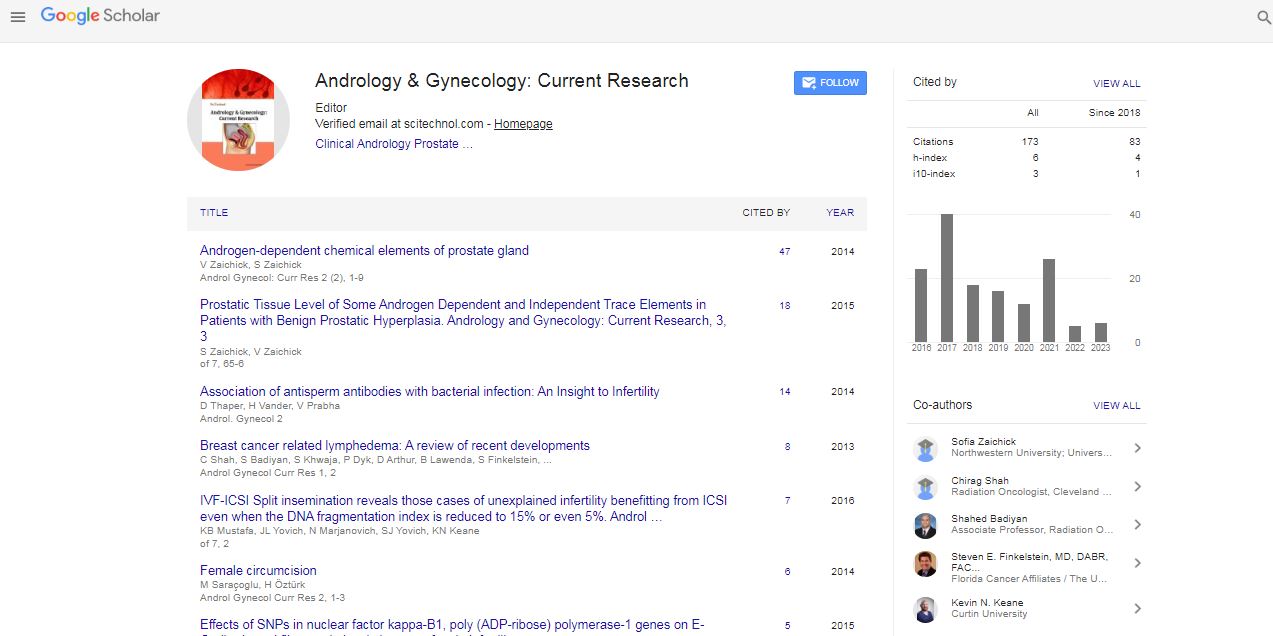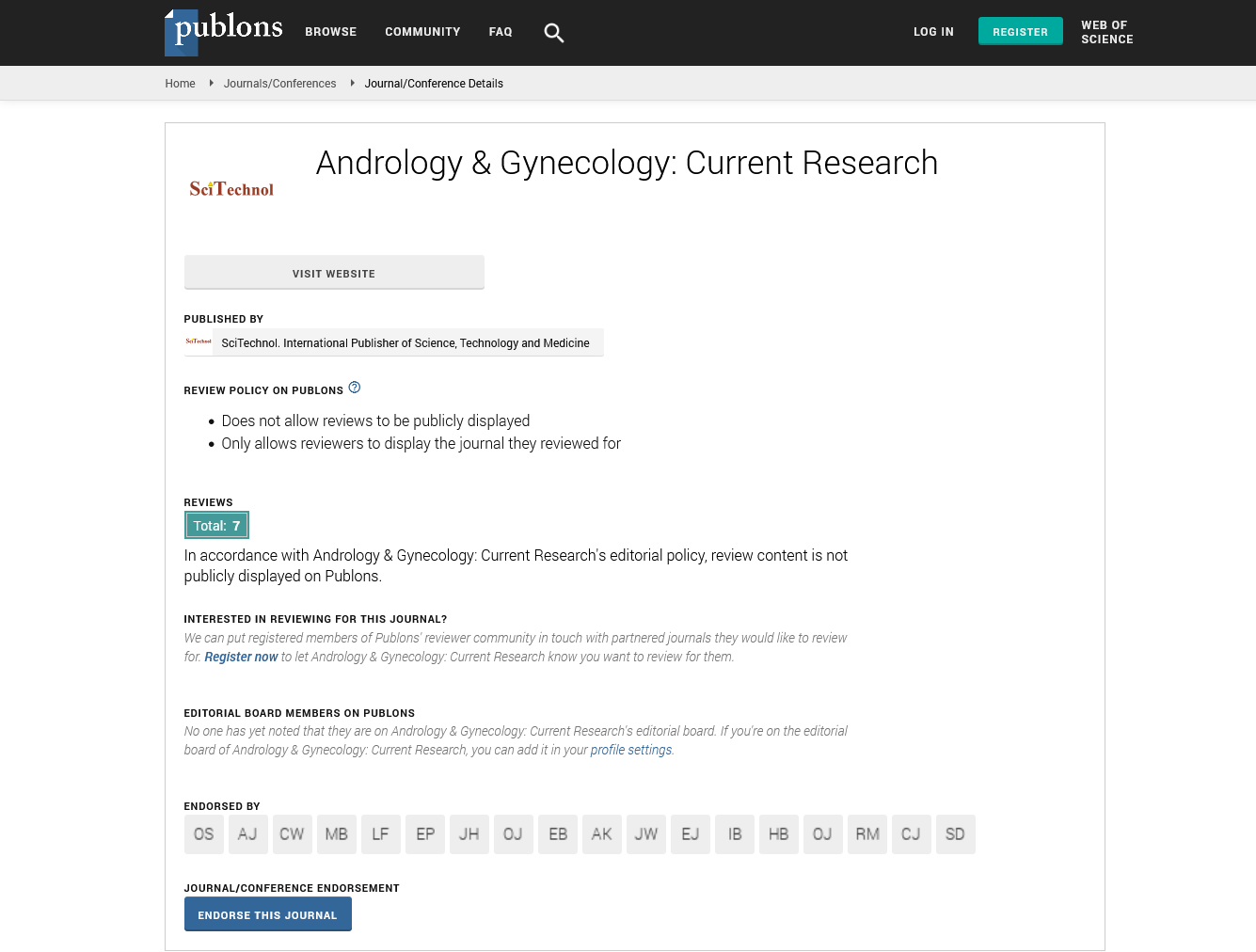Short Article, Androl Gynecol Curr Res Vol: 6 Issue: 1
Reminiscence of Fetal Monitoring
Kazuo Maeda1* and Masaji Utsu2
1Department of Obstetrics and Gynecology, Tottori University, Japan
2Department of Obstetrics and Gynecology, Seirei Mikatara Hospital, Japan
*Corresponding Author : Kazuo Maeda
Honorary professor, Department of Obstetrics and Gynecology, Tottori University, Japan
Tel: 81-859-22-6856
E-mail: maedak@mocha.ocn.ne.jp
Received: March 26, 2018 Accepted: April 10, 2018 Published: April 15, 2018
Citation: Maeda K, Utsu M (2018) Reminiscence of Fetal Monitoring. Androl Gynecol: Curr Res 6:1. doi: 10.4172/2327-4360.1000163
Abstract
Fetal well-being was assessed by enlarging of pregnant abdomen and maternal perception of fetal movements during amenorrhea in old times. There was change to medical monitoring with stethoscopic listening to fetal heart sound after 20 weeks of pregnancy and palpating diagnosis of intrauterine fetus. Recognition of X-ray photo was rarely confirmed fetal position or fetal skeleton under concern on X-ray effect on the fetus. Fetal life was confirmed by appearance of fetal electrocardiogram on maternal limb leads with Seitengalvanometer, then changed to fetal electrocardiogram (FECG) at maternal abdominal surface using electric amplifier. Maeda reported it using handmade amplifier in 1950s. Objective fetal heart sound was also recorded using adult phonocardiographic microphone, transistor amplifier and data recording with slow speed reproduction to trace fetal phonocardiogram (FPCG). As P & T waves of FECG were masked by muscle noises, FPCG was disturbed by systolic murmur in normal pregnancy, and listening to fetal heart beats failed to detect fetal sinusoidal heart rate, the fetal monitoring was changed to fetal heart rate curve recording.
Keywords: Pregnancy; Fetal monitoring; Fetus
FHR Monitoring
The early electronic fetal monitoring (EFM) was fetal heart rate (FHR) recording with fetal scalp lead FECG using a clip scalp skin needle electrode and accompanied amniotic fluid pressure by Hon in USA, reporting his FHR pattern classification, with late and severe variable decelerations. Also FHR was recorded using maternal abdominal wall penetrating FECG electrode and uterine contraction with intramyometrial pressure in Uruguay, reporting the ominous nature of Type 2 dip, which was the same as Hon’s late deceleration. These invasive FHR monitoring was unable to apply during pregnancy, and there was concern on the vertical infection of maternal viral disease with needle electrode, Hammacher and Maeda utilized fetal heart sound to record FHR curves and external tocodynamometer, which were possible to monitor the fetus during pregnancy. As ultrasound Doppler fetal heart beat was well listened even in the labor, its use to FHR curve tracing was tried but failed by irregular FHR baseline, while Y Takeuchi and Hogaki invented autocorrelation technique of Doppler fetal heart signal to obtain as clear as scalp lead FECG, FHR curve recording changed to ultrasound Doppler autocorrelation In 1970s around the world. Also noiseless FHR was obtained in fetal heart sound, thus, we used it in computerized FHR diagnosis in 1975.
Although infant cerebral palsy did not reduce in Dublin RCT using intrapartum EFM, it was reduced in full fetal monitoring of Japanese reports using external method. The success would be achieved by early fetal delivery in abnormal FHR changes. These monitoring were cardiotocogram (CTG), while Maeda intended to record fetal movement signal to analyze FHR changes with fetal movements, in addition to the analysis of FHR and contraction. which was actocardiogram (ACG). Further addition of external contraction was actocardiotocogram (ACTG), which meant that it either as ACG or CTG. FHR acceleration was provoked by the massive fetal movements (burst), and baseline variability was provoked by minor movements in ACG. Thus the loss of acceleration is early hypoxic fetal brain suppression, while the loss of variability is severe brain damage, similar to anencephaly, followed by cerebral palsy. Physiologic sinusoidal FHR was differentiated from pathologic sinusoidal, when the sinusoidal waves were synchronized with periodic fetal movements [1].
Objective FHR monitoring
FHR score: As FHR pattern classification was subjective, we changed the evaluation of FHR into objective FHR score, where FHR curve baseline bradycardia and tachycardia, FHR deceleration (transient bradycargia) duration, amplitude, nadir heart rate, lag time to contraction, recovery time to baseline, loss of accompanied acceleration to deceleration, and W shaped deceleration were evaluated by the score determined by the percentage of Apgar score lower than 7. Evaluation scores of every parameters of FHR was summarized in 5 min to form FHR score, which was abnormal if it is 10 points, and severely abnormal in 20. The FHR score is changed to Apgar score using their regression equation. Also, UApH was obtained from FHR score using their regression equation. Although FHR score was able to be calculated manually, it will be convenient to calculate with computerized analysis.
Hypoxia index: Although 3 connective late decelerations (LDs) resulted vigorous neonate, highly repeated LDs resulted severe neonatal asphyxia, loss of variability and infantile brain damage. Also deceleration should be repeated for 15 minutes before LD definition in some cases, namely, LD is ominous not due to its characteristic shape, but due to its repetition, therefore, Hypoxia Index (HI) = Sum of deceleration durations (min) divided by the lowest fetal heart rate (bpm), x 100. As HI does not include lag time, it is applied all decelerations including early, late and variable decelerations. Even sudden continuous fetal bradycardia also evaluated by HI. For example, 6 cases of higher HI than 25 in fetal monitoring developed the loss of variability, severe brain damage and cerebral palsy, while 16 cases did not develop the loss of variability, brain damage and cerebral palsy, among cases of HI lower than 25. There was significant difference of severe brain damage and cerebral palsy between the cases of 25 or more HI and cases of 24 or less of HI. Thus, it is recommended to calculate HI in fetal monitoring and indicate early delivery when HI is around 10 preparing the caesarean delivery [2].
Conclusion
A fetus should receive external FHR monitoring in late pregnancy and during labor, calculating FHR score and hypoxia index, where the fetus should receive early delivery to deliver before the hypoxia index is 24 or less, avoiding infantile cerebral palsy.
References
- Maeda K, Noguchi Y, Matsumoto F, Nagasawa T (2006) Quantitative fetal heat rate evaluation without pattern classification: FHR score and artificial neural network analysis. In Kurjak & Chervenak eds Textbook of Perinatal Medicine, (2nd ed.), Informa, London, United Kingdom.
- Maeda K (2014) Modalities of fetal evaluation to detect fetal compromise prior to the development of significant neurological damage. J Obstet Gynaecol Res 40: 2089-2094.
 Spanish
Spanish  Chinese
Chinese  Russian
Russian  German
German  French
French  Japanese
Japanese  Portuguese
Portuguese  Hindi
Hindi 


